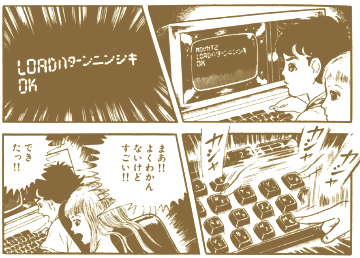パターンを作り出す動物
Pattern Making Animal

パターンを作り出す動物
Pattern Making Animal

人間の心は、パターンを作り出す機能に秀でている。 エドワード・デ・ボノの、の""'The mind as a pattern-making system.'から引用してみよう
"The mind is a pattern-making system. The information system of the mind acts to create patterns and to recognize them. This behaviour depends on the functional arrangement of the nerve cells of the brain. The effectiveness of the mind in its one way communication with the environment arises from this ability to create patterns, store them and recognize them. It is possible that a few patterns are built into the mind and these become manifest as instinctual behaviour but this seems relatively unimportant in man as compared to lower animals. The mind can also accept ready made patterns that are fed to it But the most important property of the system is the ability to create its own patterns. The way the mind actually creates patterns is described elsewhere.* A system that can create its own patterns and recognize them is capable of efficient communication with the environment It does not matter whether the patterns are right or wrong so long as they are definite. Since the patterns are always artificial ones created by the mind, it could be said that the function of mind is mistake. Once the patterns have been formed the selecting mechanism of usefulness (fear, hunger, thirst, sex, etc.) will sort out the patterns and keep those which are useful for survival. But first the patterns have to be formed. The selecting mechanism can only select patterns; it cannot form them or even alter them."
心はパターンを作るシステムである。心の情報システ
ムは、パターンを作り出し、それを認識するように作用する。この振る舞いは、脳の神経細胞の機能的配置に依存する。環境との一方的なコミュニケーションに
おける心の有効性は、このパターンを作り出し、それを保存し、認識する能力から生じている。いくつかのパターンが心に組み込まれ、それが本能的な行動とし
て現れる可能性はあるが、下等な動物に比べれば、人間にとってこれは比較的重要ではないように思われる。しかし、このシステムの最も重要な特性は、自分自
身のパターンを作り出すことができる能力である。心が実際にパターンを作り出す方法については、別のところで説明する。自分自身のパターンを作り出し、そ
れを認識できるシステムは、環境と効率的にコミュニケートすることができる。パターンは常に心が作り出した人工的なものであるから、心の働きは間違いであ
るとも言える。いったんパターンが形成されると、有用性の選択機構(恐怖、飢え、渇き、性など)がパターンを選別し、生存に有用なものを残すようになる。
しかし、まず最初にパターンが形成されなければならない。選択機構はパターンを選択できるだけで、それを形成することはできないし、それを変更することさ
えできない。
目次
Preface
Introduction
Use of this book
The way the mind works
Difference between lateral and vertical thinking
Attitudes towards lateral thinking
Basic nature of lateral thinking
The use of lateral thinking
Techniques
The generation of alternatives
Challenging assumptions
Innovation
Suspended judgement
Design
Dominant ideas and crucial factors
Fractionation
The reversal method
Brainstorming
Analogies
Choice of entry point and attention area
Random stimulation
Concepts/divisions/polarization
The new word po
Blocked by openness
Description/problem solving/design
Summary
+
リンク
文献
1970. その他の情報


